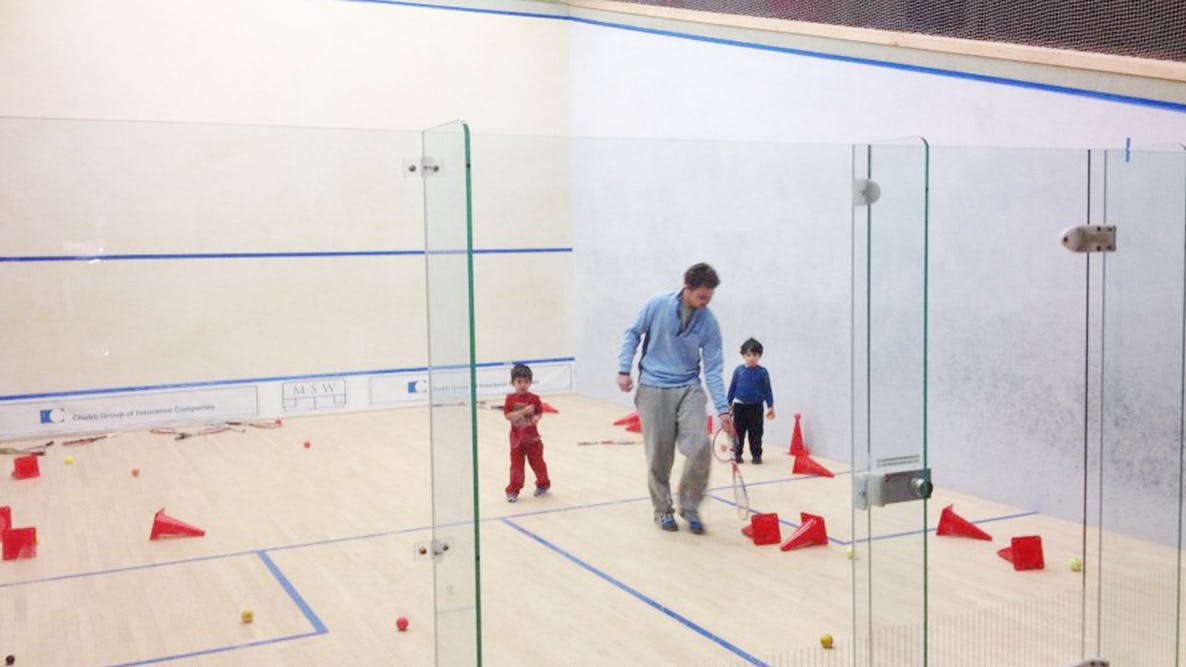Target practice
A lesson in visualizing the target and aiming in squash is also a good reminder of how to design products.
Target practice
I’ve played squash since I was a teenager.
Squash is a highly aerobic indoor racket sport that’s overshadowed in the US by racquetball in the same way the 100 meter dash dominates the marathon. The goal of squash is very simple – to win points (and games and matches) by making the ball bounce twice or making your opponent mess up.
Over the years, I’ve developed a vague idea of how to achieve that goal through a combination of speed, fitness, strength and repetition of a few “kill” shots. These techniques turned me into a decent player, capable of competing against other decent players.
When I am matched against better players, though, these techniques fail. My speed and fitness turn me into a human yo-yo. Hitting the ball hard just turns my shots into bullets that ricochet back at me with lethal speed. And my kill shots, when rushed, become mistakes.
Enter Jonas Laursen, Danish squash pro. Jonas is the rare pro that understands the power of analogy and demonstration to teach a skill. In five minutes he was able to watch me and give me transformational tips. I want to focus on one: target visualization. Jonas pointed to a place on the floor where my bread-and-butter shots should land to put pressure on my opponent. Actually, he didn’t point at the spot – he placed a shoe there and asked me to hit it. He also recounted that his coach did the same with him when he was a kid, placing shoes along the wall, baskets in the corners and comic books near the front wall. Jonas still pictures the cover of a Spiderman comic book when hitting a drop shot.
The shoe also becomes the center point of a drill where that bread-and butter “rail” shot is practiced. If you win the point conventionally you get one point. If you hit the shoe you get two points. And if you land inside the shoe, Donkey Kong falls from his perch … Actually, you get three points.
This well-placed shot puts your opponent is in an uncomfortable position. She will likely let the ball continue to the back wall, giving you extra time to prepare for your next shot. I fundamentally understood this goal, but given my techniques, I simply kept hitting the ball harder, trying to force it past my opponent.
Unfortunately a hard shot is an inconsistent shot and what usually happens is that the ball comes back fast, but way out in the middle of the court… easy pickings for a put-away shot
Having a target in addition to a goal revolutionized my game this year. I’m winning more points, games and matches. Isn’t that wonderful? Thanks for reading my blog. The end.
Oh, how does this extend to the world of engineering and product development? Ok, let me give this a shot. In a general sense, to succeed in design and engineering you have to develop your skill, pick a goal, and then define a target to hit. As in sports, your technical skills develop when you:
- Watch someone do it
- Imitate what you see
- Learn the rules
- Learn the skill
- Practice the skill over and over
- Apply the skill
Picking a goal is often the easy part and the one that everyone involved can agree upon and understand. Product and business goals can be simply to “beat the competition” or “increase sales by 10%” or “reduce the cost of goods by 25%” or “make it sexy.”
If picking the goal is the “what,” defining the target is the “how” and “why.” As product developers, we have a few techniques to define targets:
- The industrial design vision or “concept car”
- The engineering consensus, which is driven by Design Requirements or Critical to Quality characteristics (CTQs).
So if I’ve held your attention this far, let me quickly describe both… then back to watching squash on YouTube. Both start with the ubiquitous user need.
When shooting for a “concept car,” an industrial designer or team will hold all of those user needs (along with a fair helping of business needs and manufacturing constraints) in their head at once and come up with holistic designs that optimize the user experience and incorporate a beautiful aesthetic. If this is done well, the rest of the development points to a concrete target and only deviates from that target if new information demands it.
When developing CTQs, a development team will correlate measurable characteristics like size, number of parts, etc. against weighted user needs like “I want to be able to carry this home from the store in my small car” and business needs like “Our capital budget is $100,000 for this product.” They will bring stakeholders together to agree upon the weights and correlations and let the numbers generate the CTQs. The development team now has a scorecard to measure any design against and, more importantly, the CTQs create a picture to focus on.
So the next time you feel yourself hitting the ball harder and losing more points, think about where you are aiming.
